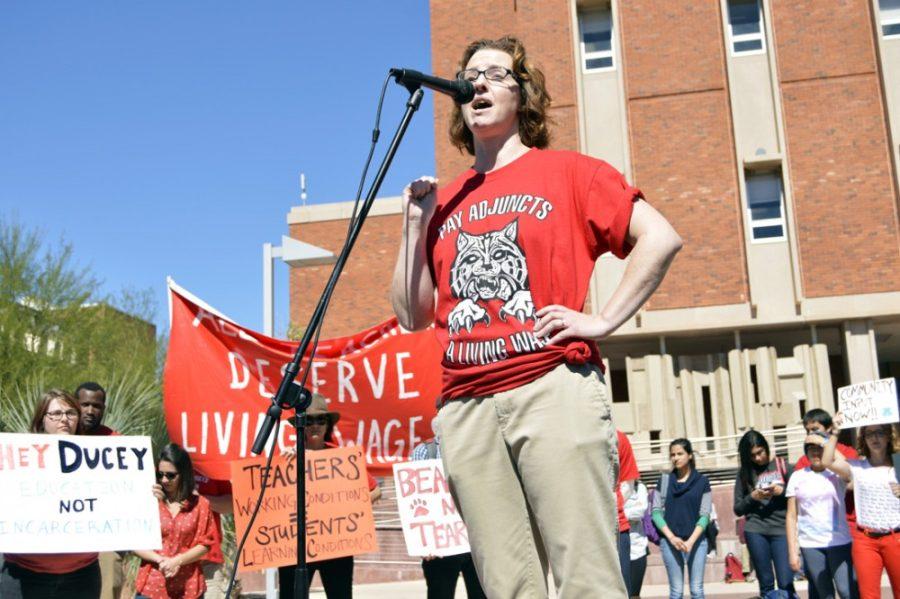As college costs and demands have increased, adjuncts and graduate students have taken up more duties of instruction, research and teacher assistance at campuses throughout the nation — and the UA is no exception.
Adjuncts and graduate students teach more than 40 percent of UA undergraduate courses. As the duties of adjunct faculty have risen over the years, talks have shifted to increased pay and job security.
The current discussion over payment for contingent staff is being held amid a trend of rising college tuition rates and stagnating instructor salaries. In the last five years, the cost of in-state tuition alone has increased by 70 percent in Arizona, according to a report by College Board.. However, this hasn’t gone toward increasing the wages of adjuncts: The average $33,000 salary for full-time adjuncts has remained the same over this five-year period, without any cost-of-living adjustments.
According to Lisa O’Neill, a full-time, non-tenured adjunct working in the UA English department, the workload for a full-time adjunct in the English department is four full courses a semester, garnering instructors $4,200 for each class.
“We’re pushing for that to be brought up to $7,800,” O’Neill said.
She, along with several other students and adjunct faculty throughout campus, are calling for a “living wage” to meet an increasing workload and standard of living.
“I’d say I make poverty wages,” said John Washington, who teaches upper-tier classes at the UA to English and creative writing students. “The courses I teach are at the highest level for many students’ majors, and it requires a lot of time and focus for each individual student.”
Along with increased pay, Washington is calling for reduced class sizes and overall better teaching conditions.
“I don’t have an office,” he said, echoing a widespread sentiment that the quality of teaching is at risk because of dwindling pay and priorities for UA instructors.
The problems of stagnating wages go beyond a struggle to pay for living expenses. The outside jobs that both part-time and full-time adjuncts rely on take away from their time to focus on teaching.
“People working as adjuncts end up having to work nights at [businesses such as] Target,” said Zachary Brooks, president of the Graduate and Professional Student Council, “which keeps them from being fully devoted to working as instructors.”
Both O’Neill and Washington work outside of their jobs as adjuncts; O’Neill devotes time to freelance writing and teaches two creative writing workshops in Tucson. Washington works as a translator and also contributes his written work to news publications. Their varied employment status reflects the issues of insufficient pay and job security facing the field of contingent faculty throughout the UA campus and nation at large.
Nevertheless, the duties of adjunct faculty have continued to increase over the years, even as pay has remained constant.
“Oftentimes, the students we teach are either first generation college-goers or have English as their second language,” O’Neill said. “These are students that usually need additional support to be successful.”
Washington added that alone is “just in the writing department.”
As adjuncts struggle for livable compensation under expanding job demands, executive workers at the university continue to enjoy expanding salaries. Just this year, UA President Ann Weaver Hart is set to receive a $170,000 bonus added to her $600,000 annual salary.
“To be clear, we’re not saying that executives shouldn’t get paid for their hard work,” O’Neill said. “We’re just calling for people to reassess their priorities for education.”
Brooks echoed O’Neill’s statements regarding the university’s investment in its faculty.
“Teachers, students, the university and society as a whole end up benefitting,” Brooks said.
As UA adjuncts’ work continues to expand without any comparable increase in compensation, students will need to consider the key relationship between instructors’ pay, conditions, job security and the quality of their tuition.
_______________
Follow Isaac Rounseville on Twitter.









